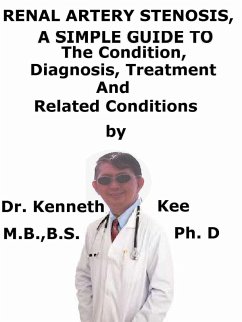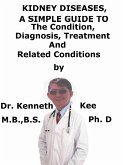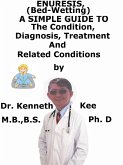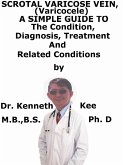Renal artery stenosis is a narrowing of one or both renal arteries that provides blood to the kidneys.
The kidneys filter the blood of waste products, balance the electrolytes in the body, regulate blood pressure and trigger the production of red blood cells.
The kidneys are excessively sensitive to any reduction in blood flow.
When a renal artery becomes narrow due to plaque accumulation (stenosis) and blood flow is limited to even one kidney, high blood pressure can happen.
Renal artery stenosis produces about 5% of all cases of hypertension and can decrease kidney size.
When the stenosis affects both kidneys, it can also cause impaired kidney function (renal failure).
Stenosis of both renal arteries is a chief cause of renal failure in the elderly person.
Causes
In young people, there is normally about an overgrowth of muscle tissue of the vessel wall called fibromuscular dysplasia
In elderly people, there is often a matter of calcium deposits or cholesterol in the renal arteries causing hardening of the arteries (atherosclerosis).
Risk factors for renal artery disease are:
1.Age over 50
2.Diabetes
3. High cholesterol
4.Smoking
5.High blood pressure
6.Family history of coronary artery disease, peripheral arterial disease, and renal artery disease
7. Neurofibromatosis, a genetic disorder that disturbs cell growth in the nervous system, causing tumors to form on nerve tissue
Small renal artery stenosis is common and causes little or no problems.
When they reach a certain size, there may be problems like high blood pressure and kidney failure
Symptoms
High blood pressure that is not regulated by medicines and lifestyle changes, such as diet and exercise, may be a symptom of renal vascular disease.
Symptoms of renal vascular disease may also involve occasions of fluid retention or congestive heart failure.
In some patients, renal vascular disease may be completely asymptomatic.
In serious cases, renal artery disease may cause kidney failure.
Symptoms of kidney failure are:
1.Weakness,
2.Shortness of breath and
3.Fatigue.
Diagnosis
Initially, blood tests are taken among other things, to assess elevated levels of the hormone's renin and aldosterone, and to assess renal function.
Tests that can be used to diagnose renal artery stenosis are:
1.Angiography, an X-ray examination in which the size of the renal artery is tested by contrast dye
2.Abdominal duplex ultrasound,
3.Magnetic resonance angiography
4.Computed tomography
Treatment:
The correct treatment for a person is dependent on the seriousness of the disease and the person's medical history.
The aim of treatment is to prevent serious kidney damage and to reduce blood pressure.
Hypertension is treated by ACE inhibitors or ARB medicines
Some people with atherosclerosis may benefit from cholesterol-lowering medicines (statins).
Lifestyle changes such as weight reduction, smoking cessation, exercise and a low-salt and low-fat diet can help slow or prevent renal artery disease.
For some patients with considerable narrowing of the renal arteries, mostly patients with narrowed areas in the renal arteries on both sides of the body or those with serious symptoms, a procedure may be advised to widen the blocked arteries to restore circulation
Renal angioplasty with stent can widen the narrowed renal ateries.
In certain patients, surgical treatment may be required to restore blood flow to the kidney
Endarterectomy, during which a vascular surgeon removes the diseased inner lining of the artery and the plaque deposits
Bypass procedure, using a segment from another artery to detour around the blocked area
TABLE OF CONTENT
Introduction
Chapter 1 Renal Artery Stenosis
Chapter 2 Causes...
Dieser Download kann aus rechtlichen Gründen nur mit Rechnungsadresse in A, B, CY, CZ, D, DK, EW, E, FIN, F, GR, H, IRL, I, LT, L, LR, M, NL, PL, P, R, S, SLO, SK ausgeliefert werden.









